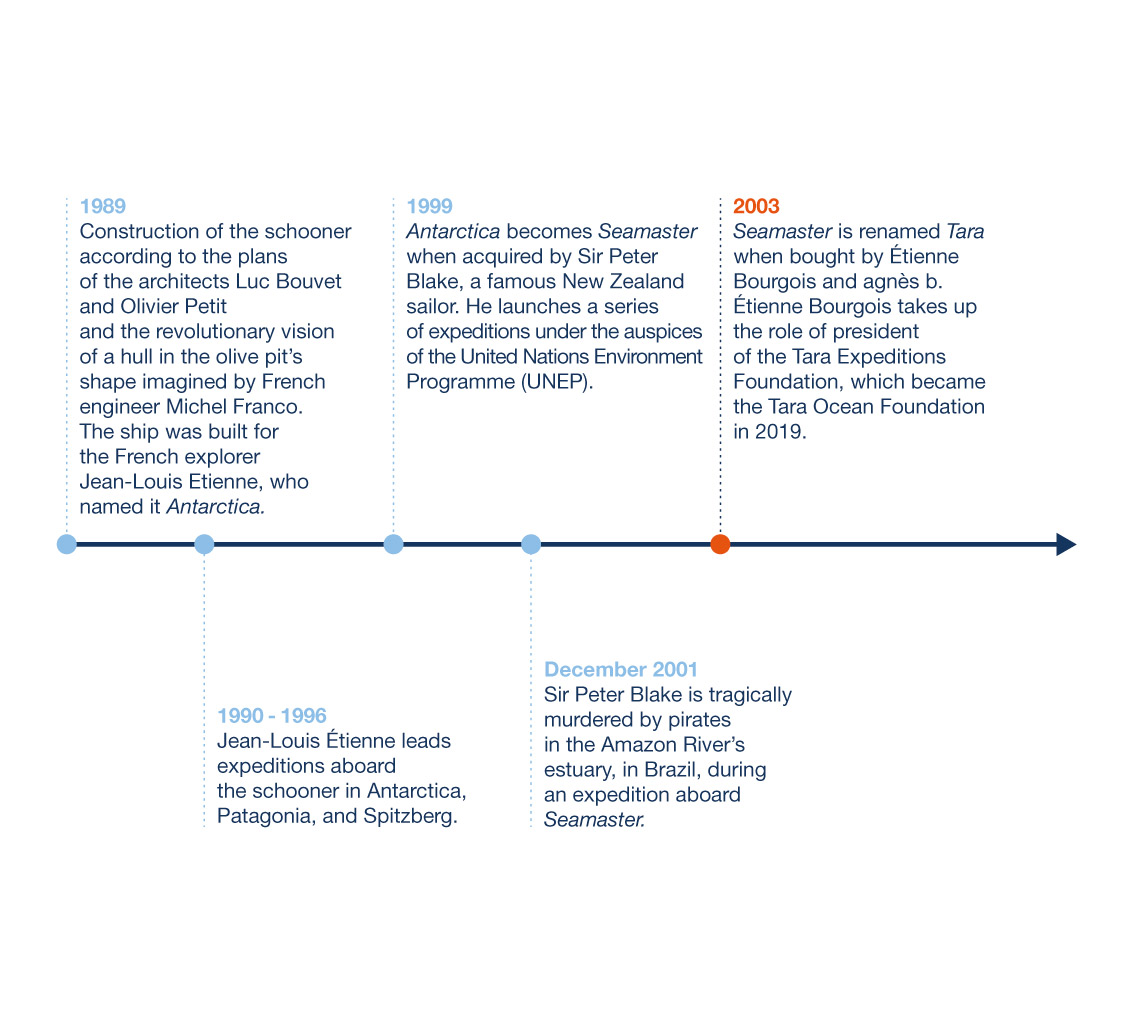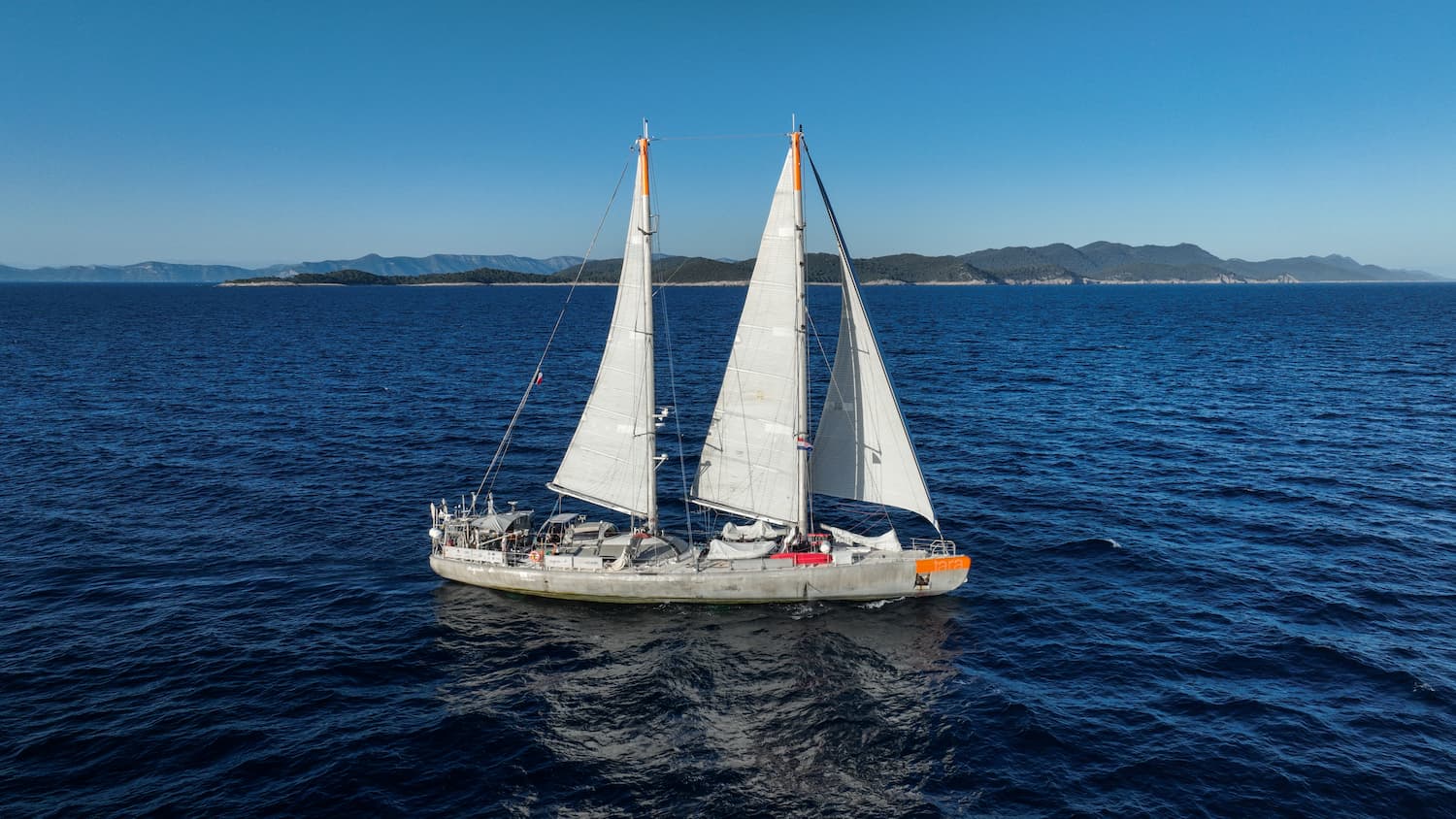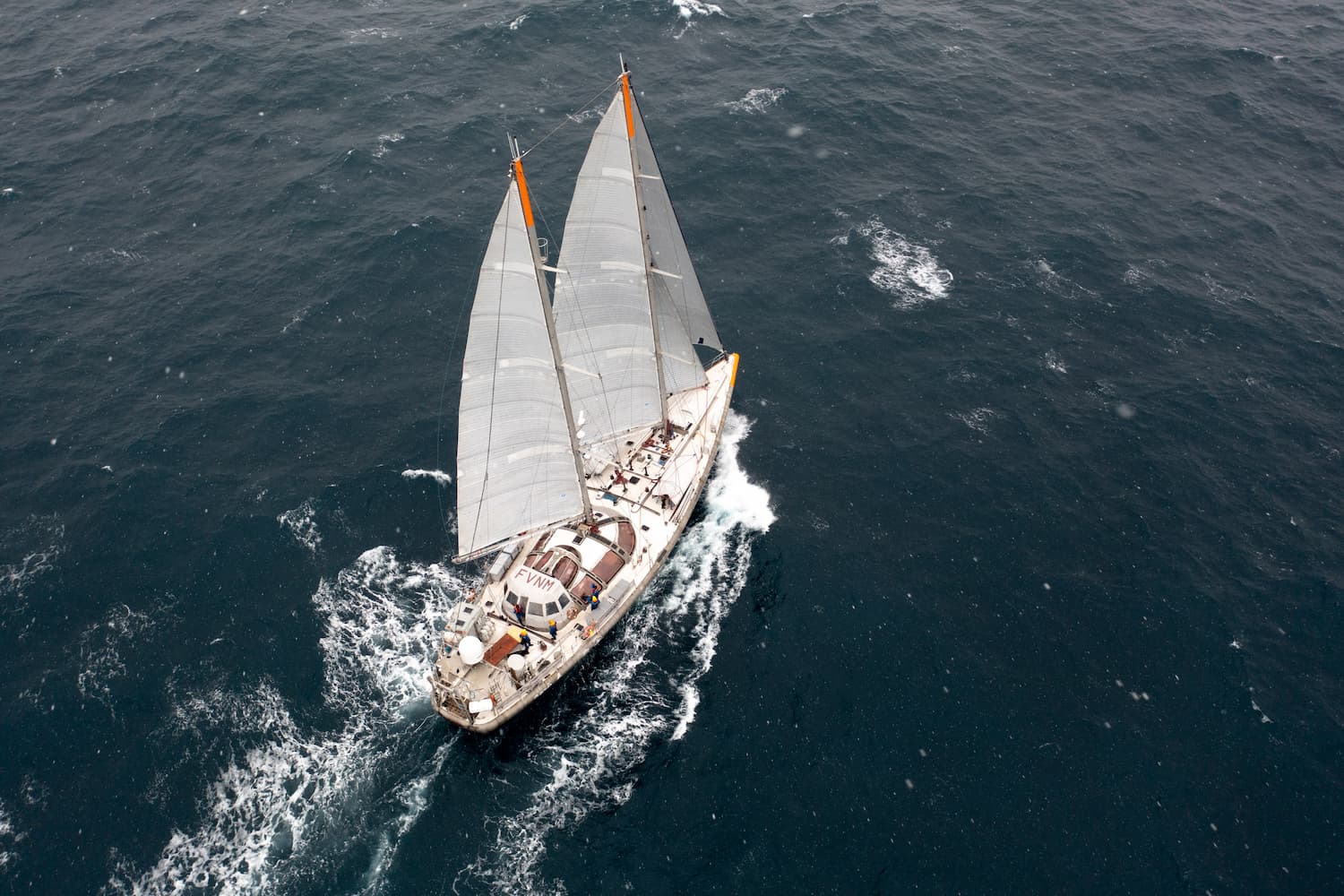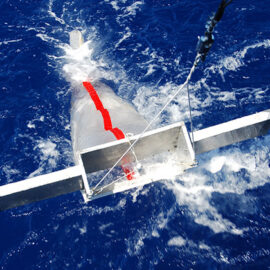TARA the only schooner of its kind in the world

The heroine of Tara
After having been imagined by Jean-Louis Etienne and then led by the great sailor Sir Peter Blake, it is under the impulse of the French designer Agnès Troublé, known as agnès b., and her son Étienne Bourgois that the unusual schooner has continued its journey since 2003.
When they decided to take the schooner over, their intention was to extend the work of Sir Peter Blake for the benefit of the protection of the ocean. Tara, designed to navigate in the polar regions, set out for the first time in the ice in 2004 with an expedition to Greenland and then carried out an Arctic drift in 2006.
With the strength of a collective experience made of rich encounters and unchanging friendships, the adventure of the Tara Ocean Foundation began, carried by a passionate and committed team on land and at sea, and mobilized by an incredible desire to serve the science of the Ocean and to share it with as many people as possible.
- 2 Masts on the schooner Tara
- 500,000 km already covered and it’s not finished yet!
- 36 metres long
-
– 41°C
the lowest temperature to which
the schooner was exposed
Characteristics
A floating laboratory
-
Lenght
36 metres
-
Mast
27 metres
-
Crew
14 people
-
Width
10 metres
-
Draught
3,50 metres
-
Deadweight tonnage
130 tonnes
-
Sails
400 square metres
-
Thickness of the hull
4.5 centimetres
-
Desalinator
300 litres/hour
-
Sleeping accommodation
14
-
Autonomy
500 nautical milles
-
Flag
France
The expeditions of the schooner
Tara Europa
Current expedition
Understanding the impact of human activities on the biodiversity of European coastal ecosystems!
For two consecutive years, the schooner Tara is participating in the study of coastal ecosystems all along the European coast. The sampling of Tara Europa is part of the TREC expedition – Traversing
European Coastlines, conceived by EMBL in collaboration with the Tara OceanS consortium, the Tara Ocean Foundation and more than 70 scientific institutions. During this expedition, a parallel study of biodiversity on land, with EMBL’s mobile laboratories, and at sea, with the schooner Tara, is carried out.
What else?









Support the Foundation
antarctThe Tara Ocean Foundation needs everyone’s support to carry out its actions. Following us, sharing our actions, making a donation, or making a purchase from our shop helps us to amplify the voice of the Ocean and increase our impact.
Together let’s defend Life and protect the Ocean.










